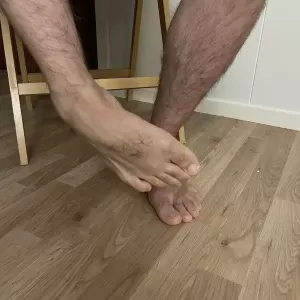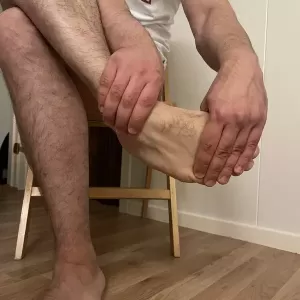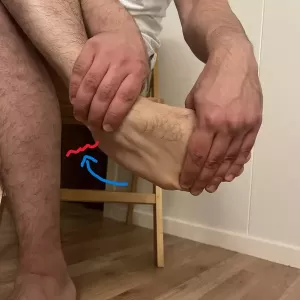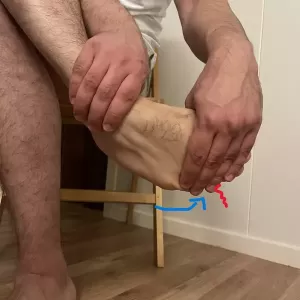Peroneus Longus Stretch For Flexibility (Follow-Up Routine With 4 Best Stretches)
The Peroneus longus is a muscle in a lateral compartment of your lower leg, and it’s longer than peroneus brevis muscle. The function of this muscle is to evert the ankle and foot, as well as to assist with plantar flexion in your ankle.
When peroneus longus muscle is damaged or injured, it can lead to ankle instability as well as overpronation/supination of the ankle when walking.
In other words, peroneus longus muscle is important for the proper alignment of your ankle and foot.
This muscle is often damaged when an ankle sprain occurs.
Since this type of injury happens often, let me show you how to stretch peroneus longus to keep this muscle up and working as a clock.
4 Best Stretches for Peroneus Longus (Follow-Up Routine)
Perform the stretches in order as I have presented here to get the most out of your stretching exercises.
1. Dynamic Stretch for Peroneus Longus
End Position (plantar flexion and inversion of foot)
From a seated position, lift one foot slightly off the ground. Then move your ankle towards plantar flexion and inversion and back to the starting position. Repeat 10x.
I love to use dynamic stretches as preparation for deep passive stretches.
2.Seated Peroneus Longus Stretch (Passive/Static Stretch)
Sit on a chair and grab your foot with both hands. Then gently pull your foot downward (plantarflexion) and perform an inversion (inward twisting).
Hold for the 30s when you find the appropriate stretching intensity. (Don’t overstretch – stop when stretching is pleasant.)
3. Contract-Relax for Peroneus Longus
blue – move your foot, red – resist with your hands
Let me show you two advanced stretching techniques for peroneus longus muscle, a part of proprioceptive neuromuscular facilitation (PNF). Here is the first one:
Perform the seated passive peroneus longus stretch.
Now hold the stretch for 10s.
Then push with your foot against your hands so you contract your peroneus longus muscle.
Push upward and into eversion with your foot. Resist with your hands so you don’t move your foot. Hold the resist for 5s.
Now move into a deeper passive stretch, and repeat the whole process five times.
3. Contract-Relax-Antagonist Contract for Peroneus Longus
activation of the antagonist’s muscles
Here is the second PNF stretching technique you can use to relieve tension in your peroneus longus muscle.
Repeat the contract-relax technique (exercise nr. 3), but don’t stop there.
Now I want you to activate statically muscles that are antagonists for peroneus longus.
Push down and inward with your foot, while your hands are resisting the movement. Hold for 5s.
Then repeat the whole process five times, including the contract phase of peroneus longus, the deep passive stretch, and the contraction of the antagonist’s muscles.
Enjoy your stretching routine. Thank you for reading my article.
Improve your stretching routine with stretching straps or yoga blocks. Take a look at home stretching equipment – list of best stretching tools for home training.




